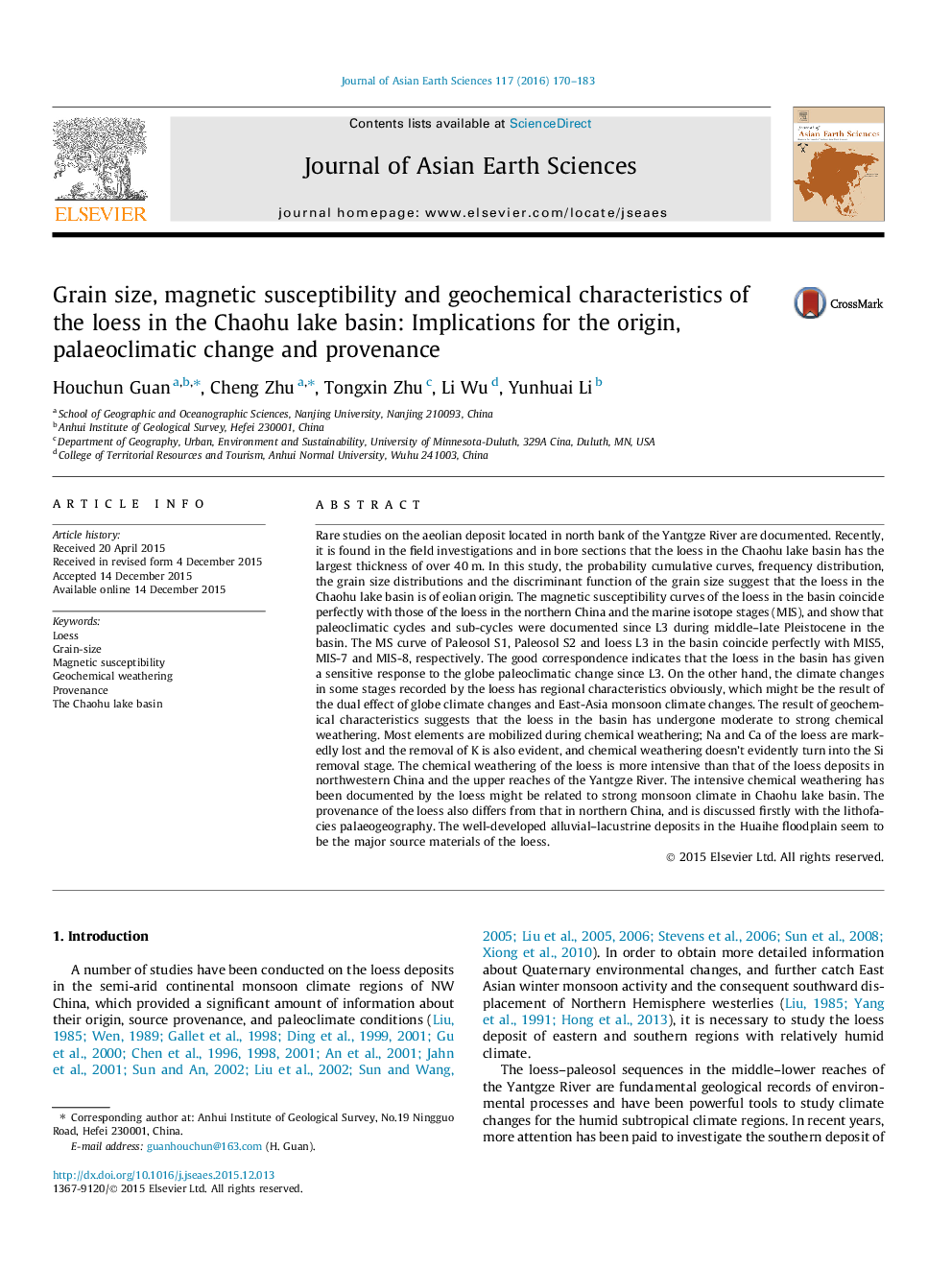| کد مقاله | کد نشریه | سال انتشار | مقاله انگلیسی | نسخه تمام متن |
|---|---|---|---|---|
| 4730183 | 1640354 | 2016 | 14 صفحه PDF | دانلود رایگان |
• Systematically exploring the origin of the loess in the Chaohu lake basin.
• The paleoclimatic changes documented by MS can be compared with that of Luochuan and MIS.
• Firstly making use of lithofacies palaeogeography to discuss the provenance of the loess in southern China.
• Other new insights and a representative area into the provenance of the loess in southern China.
• First study on the provenance of the loess in north of the middle–lower Yangtze River.
Rare studies on the aeolian deposit located in north bank of the Yantgze River are documented. Recently, it is found in the field investigations and in bore sections that the loess in the Chaohu lake basin has the largest thickness of over 40 m. In this study, the probability cumulative curves, frequency distribution, the grain size distributions and the discriminant function of the grain size suggest that the loess in the Chaohu lake basin is of eolian origin. The magnetic susceptibility curves of the loess in the basin coincide perfectly with those of the loess in the northern China and the marine isotope stages (MIS), and show that paleoclimatic cycles and sub-cycles were documented since L3 during middle–late Pleistocene in the basin. The MS curve of Paleosol S1, Paleosol S2 and loess L3 in the basin coincide perfectly with MIS5, MIS-7 and MIS-8, respectively. The good correspondence indicates that the loess in the basin has given a sensitive response to the globe paleoclimatic change since L3. On the other hand, the climate changes in some stages recorded by the loess has regional characteristics obviously, which might be the result of the dual effect of globe climate changes and East-Asia monsoon climate changes. The result of geochemical characteristics suggests that the loess in the basin has undergone moderate to strong chemical weathering. Most elements are mobilized during chemical weathering; Na and Ca of the loess are markedly lost and the removal of K is also evident, and chemical weathering doesn’t evidently turn into the Si removal stage. The chemical weathering of the loess is more intensive than that of the loess deposits in northwestern China and the upper reaches of the Yantgze River. The intensive chemical weathering has been documented by the loess might be related to strong monsoon climate in Chaohu lake basin. The provenance of the loess also differs from that in northern China, and is discussed firstly with the lithofacies palaeogeography. The well-developed alluvial–lacustrine deposits in the Huaihe floodplain seem to be the major source materials of the loess.
Journal: Journal of Asian Earth Sciences - Volume 117, 1 March 2016, Pages 170–183
